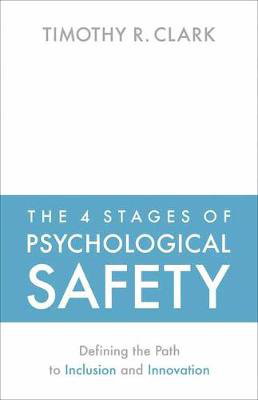
PublishedBerrett-Koehler, March 2020 |
ISBN9781523087686 |
FormatSoftcover, 200 pages |
This is the first practical, hands-on guide that shows how leaders can build psychological safety in their organisation, creating an environment where employees feel fully engaged and encouraged to contribute their best ideas.
This book is the first practical, hands-on guide that shows how leaders can build psychological safety in their organizations, creating an environment where employees feel included, fully engaged, and encouraged to contribute their best efforts and ideas.
Perhaps the leader's most challenging task is to increase intellectual friction while decreasing social friction. When this doesn't happen and it becomes emotionally expensive to say what you truly think and feel, that lack of psychological safety triggers the self-censoring instinct, shuts down learning, and blocks collaboration and creativity. Timothy R. Clark, a former CEO, Oxford-trained social scientist, and organizational consultant, provides a research-based framework to help leaders transform their organizations into sanctuaries of inclusion and incubators of innovation.
When leaders cultivate psychological safety, teams and organizations progress through four successive stages. First, people feel included and accepted; then they feel safe to learn, contribute, and finally, challenge the status quo. Clark draws deeply on psychology, philosophy, social science, literature, and his own experiences to show how leaders can, and must, set the tone and model the ideal behaviors--as he says, "you either show the way or get in the way." This thoughtful and pragmatic guide demonstrates that if you banish fear, install true performance-based accountability, and create a nurturing environment that allows people to be vulnerable as they learn and grow, they will perform beyond your expectations.

